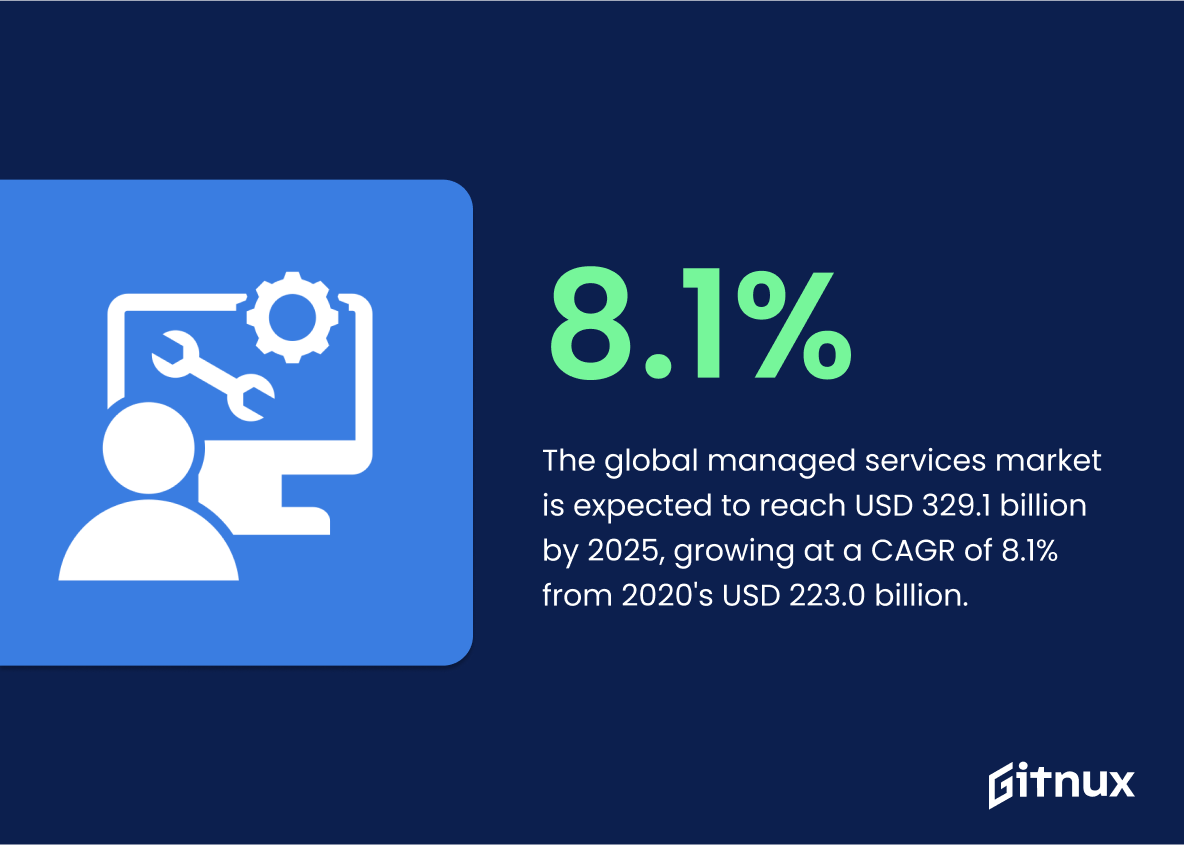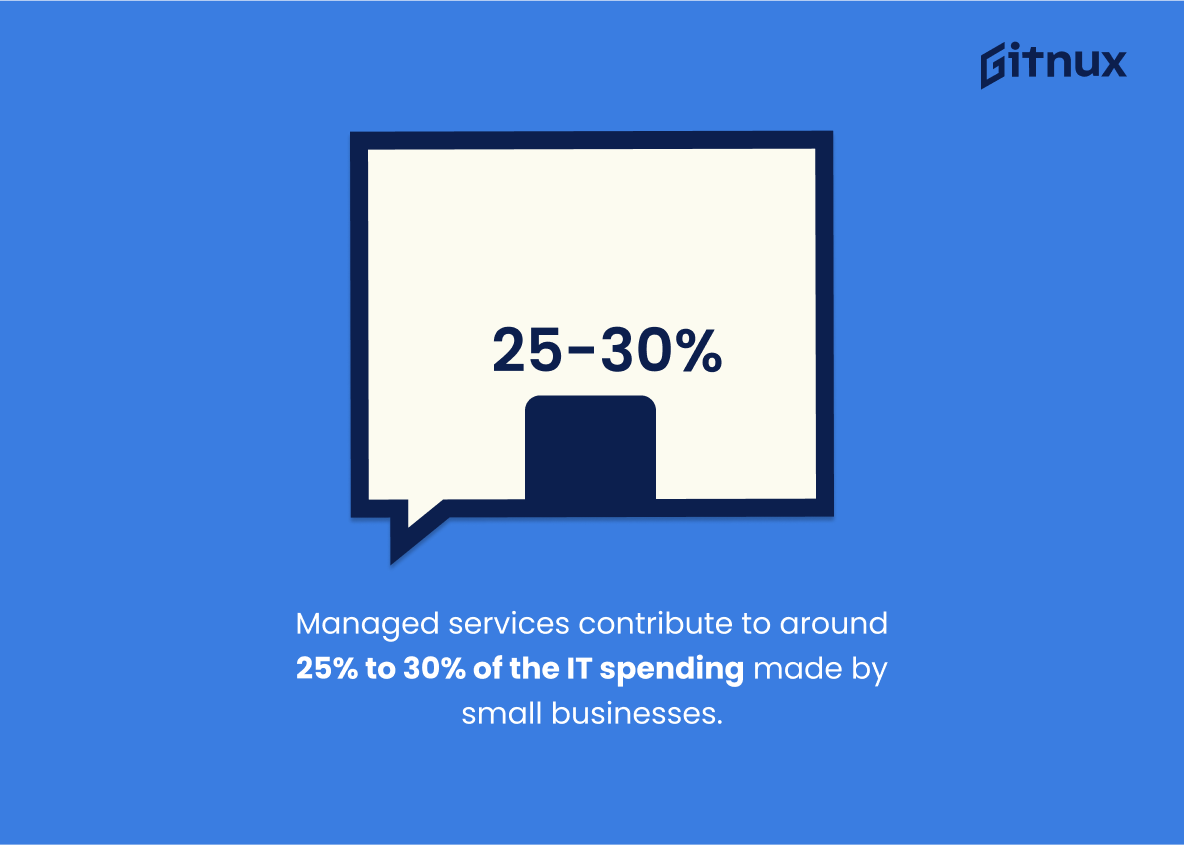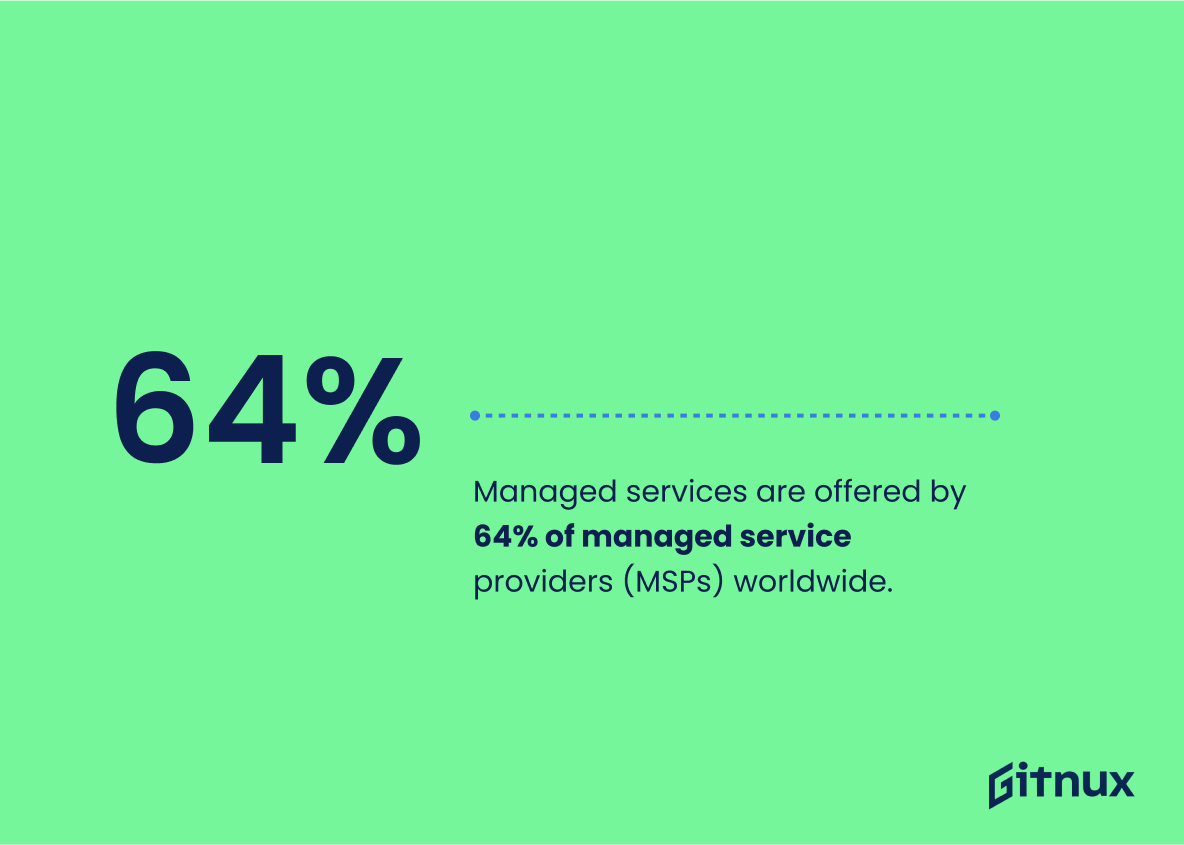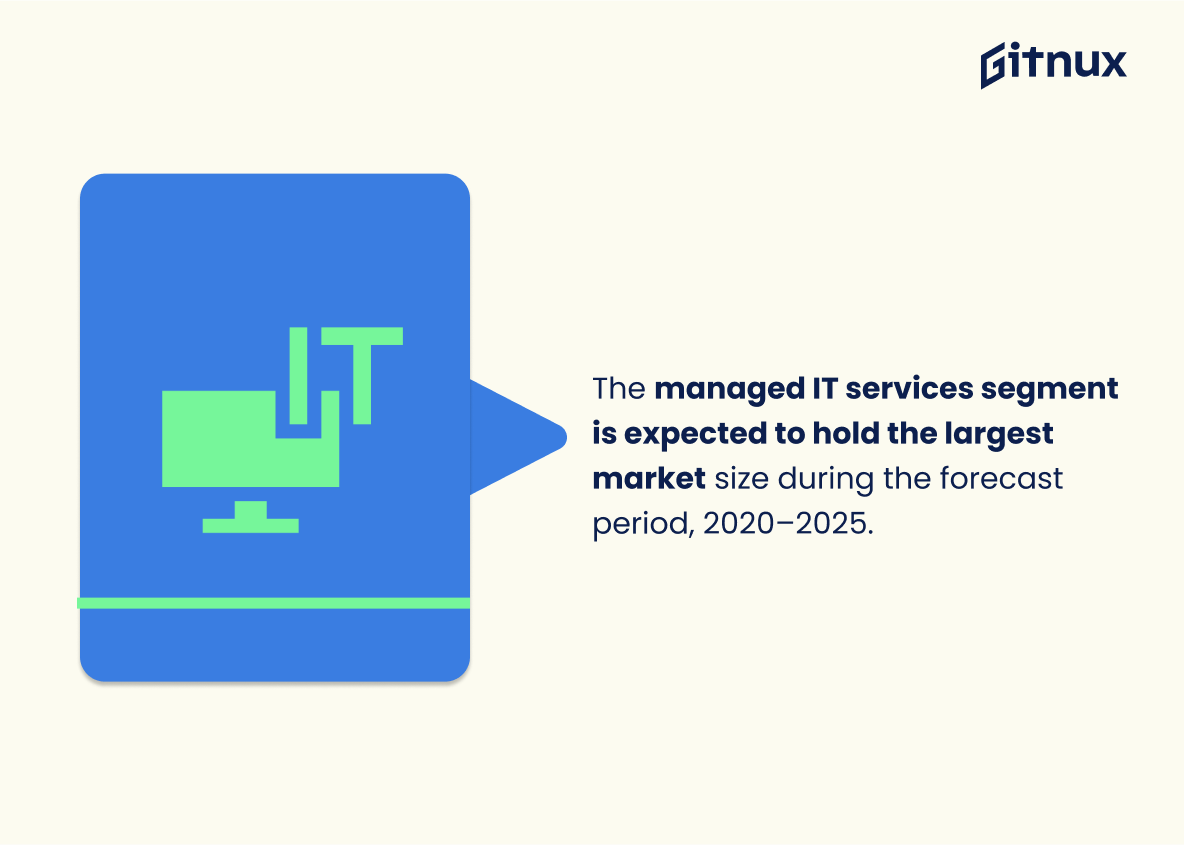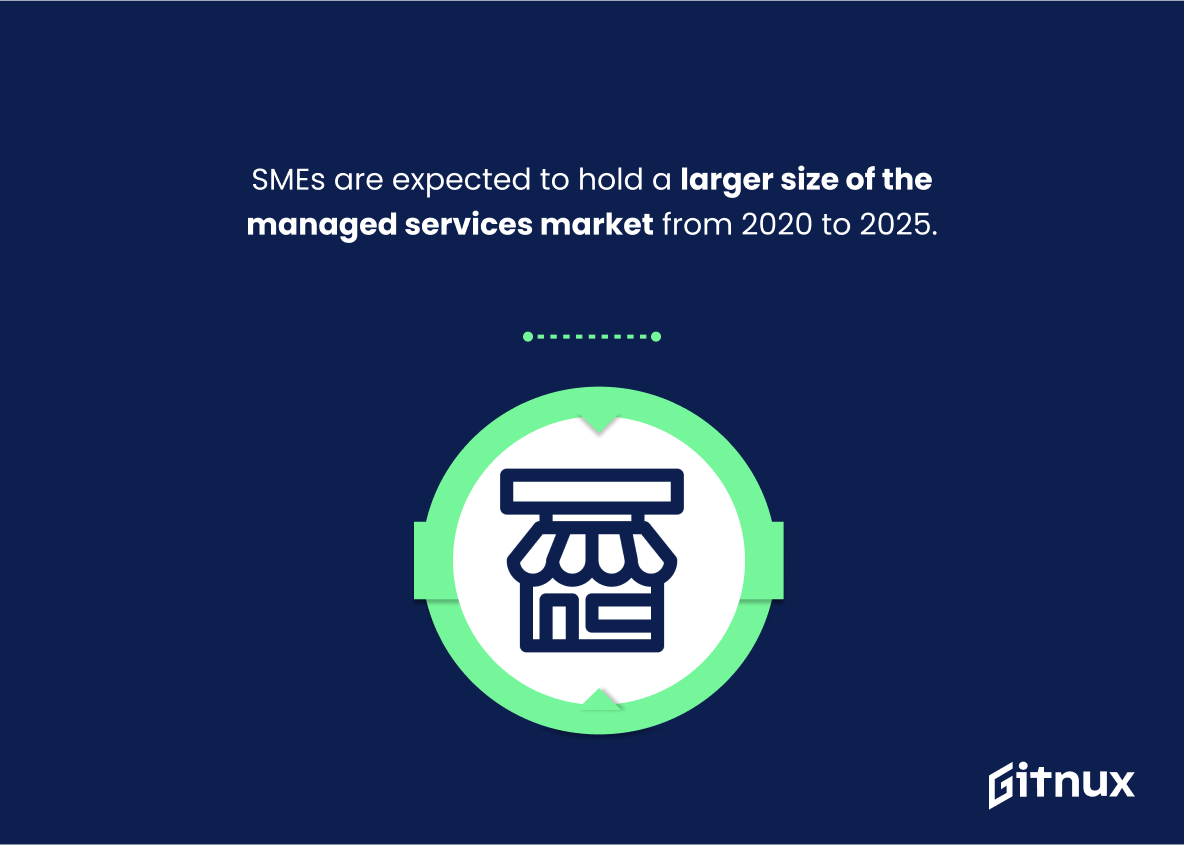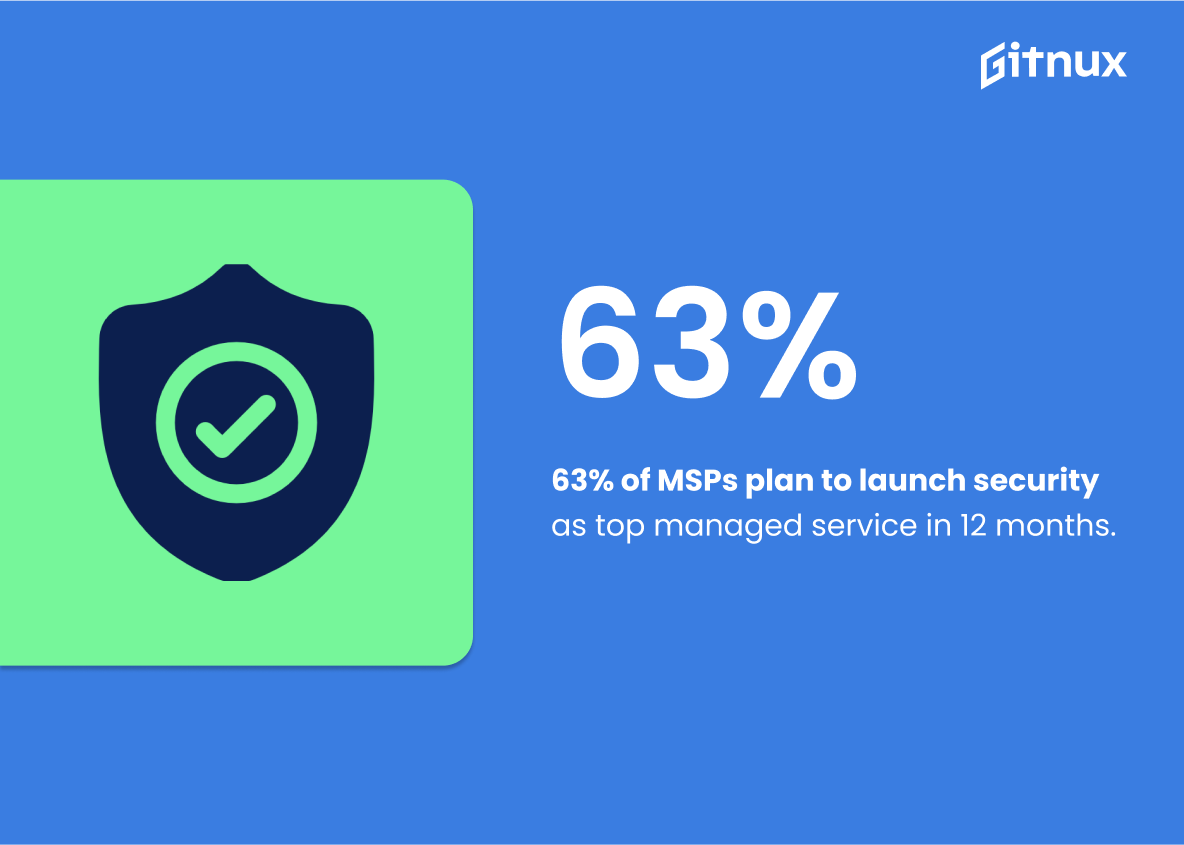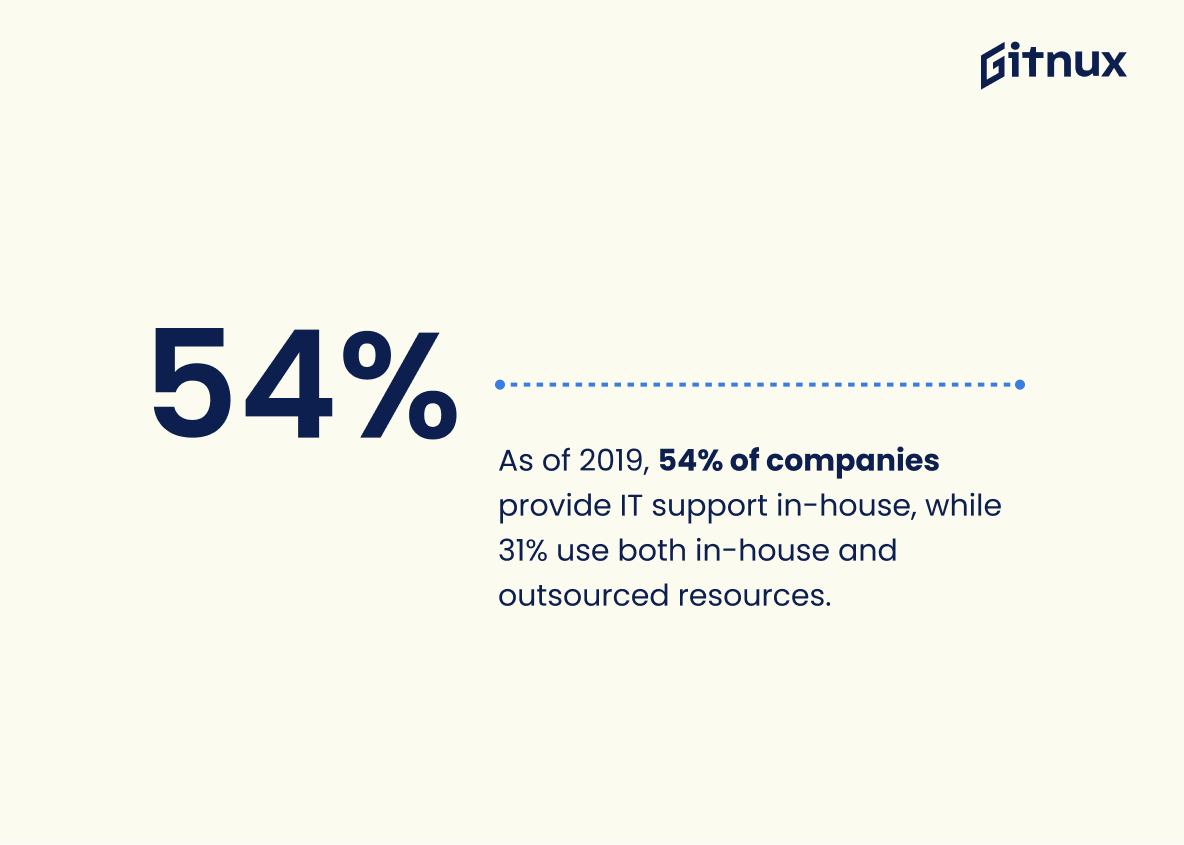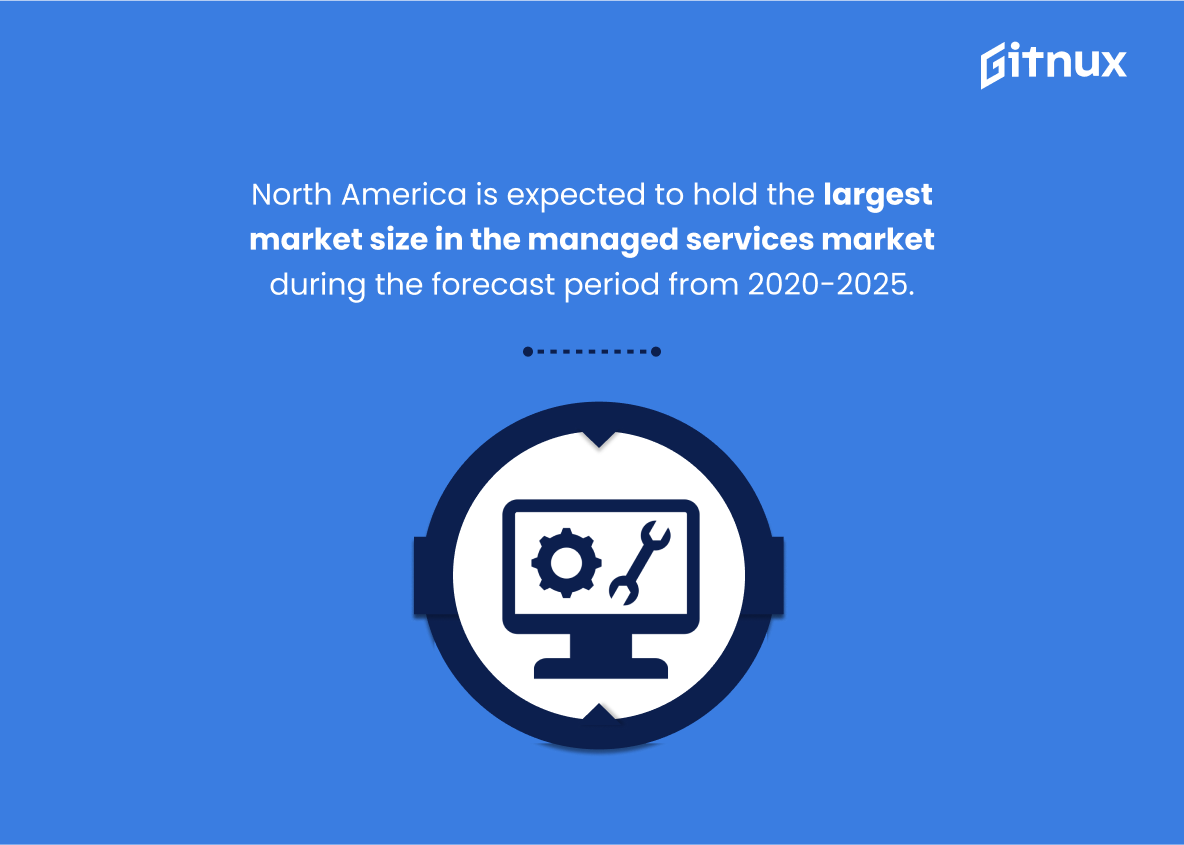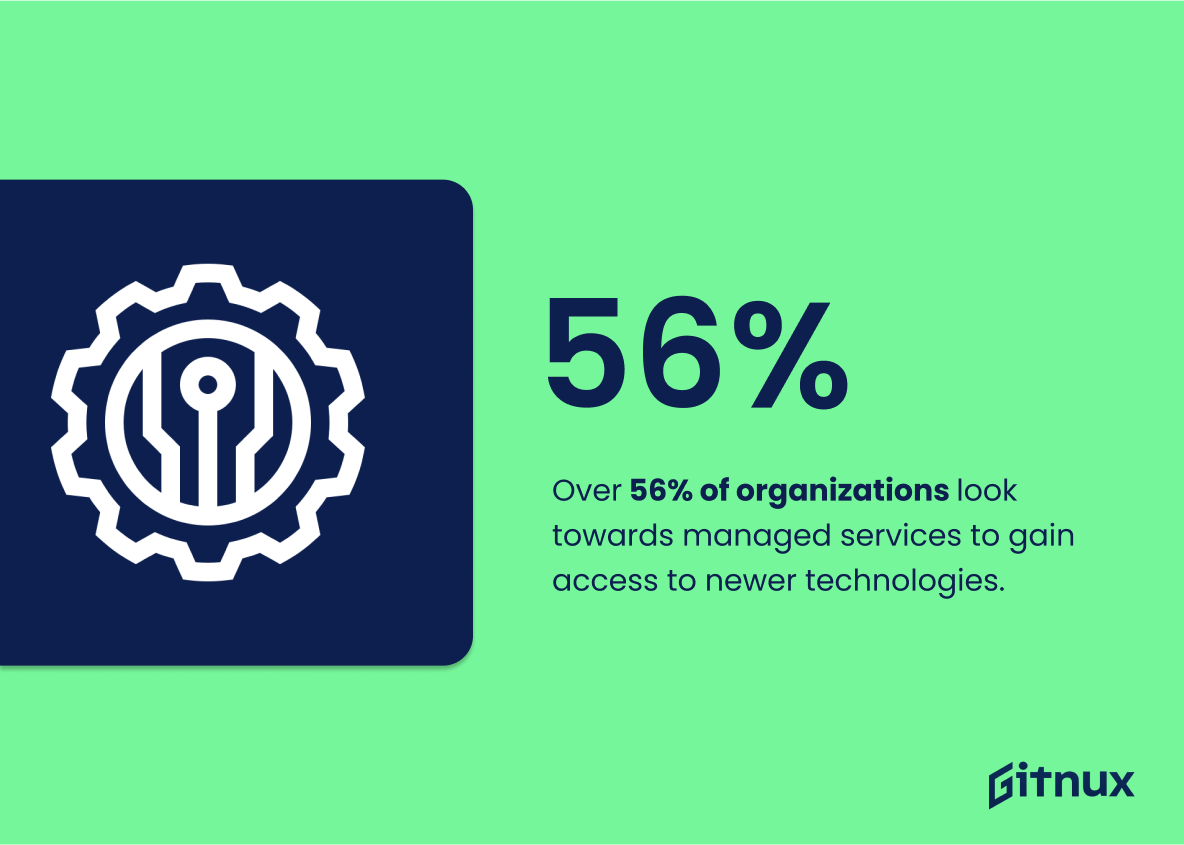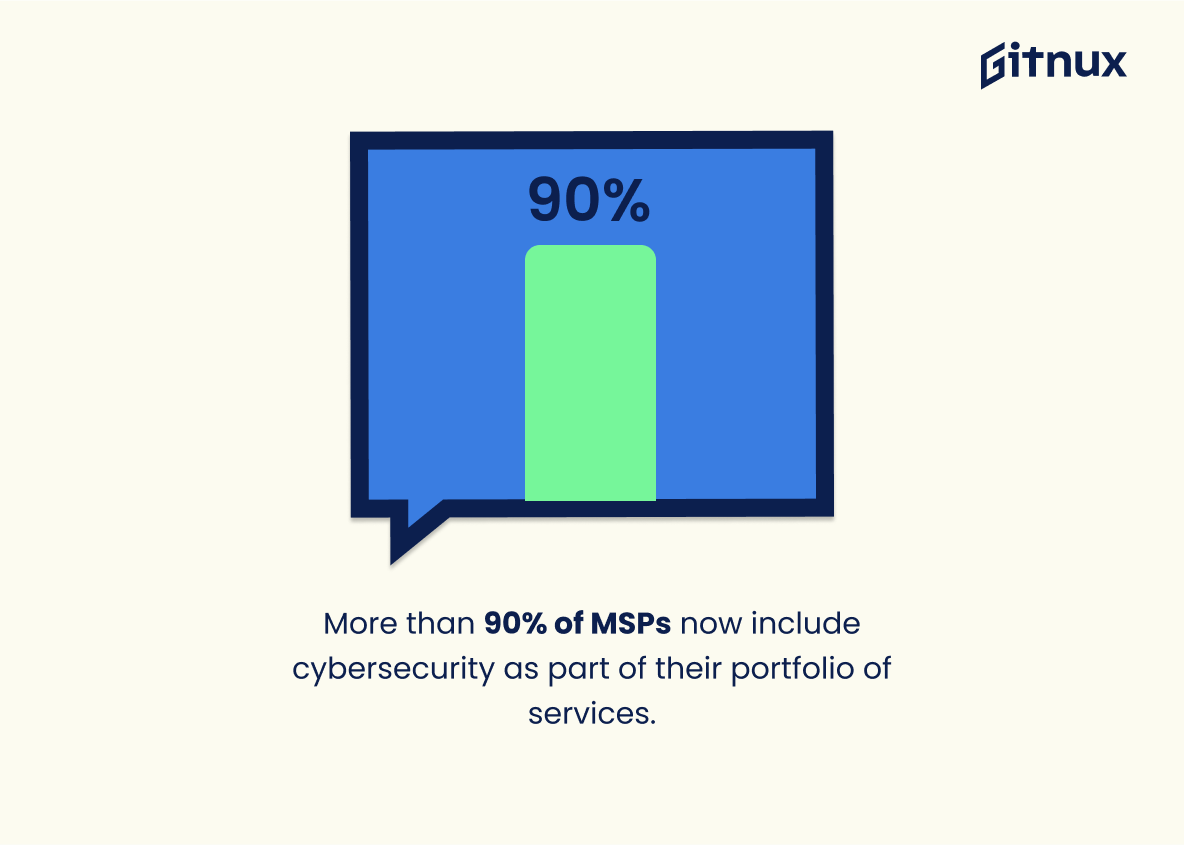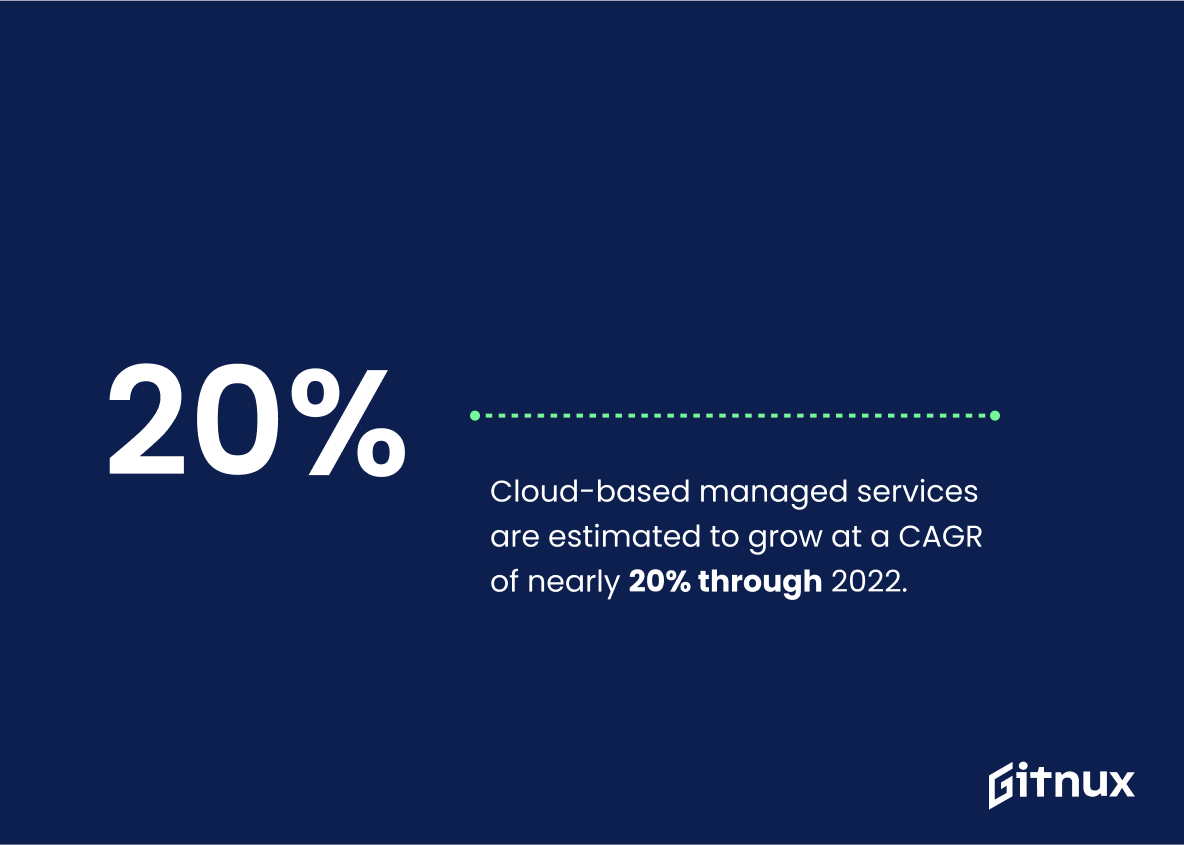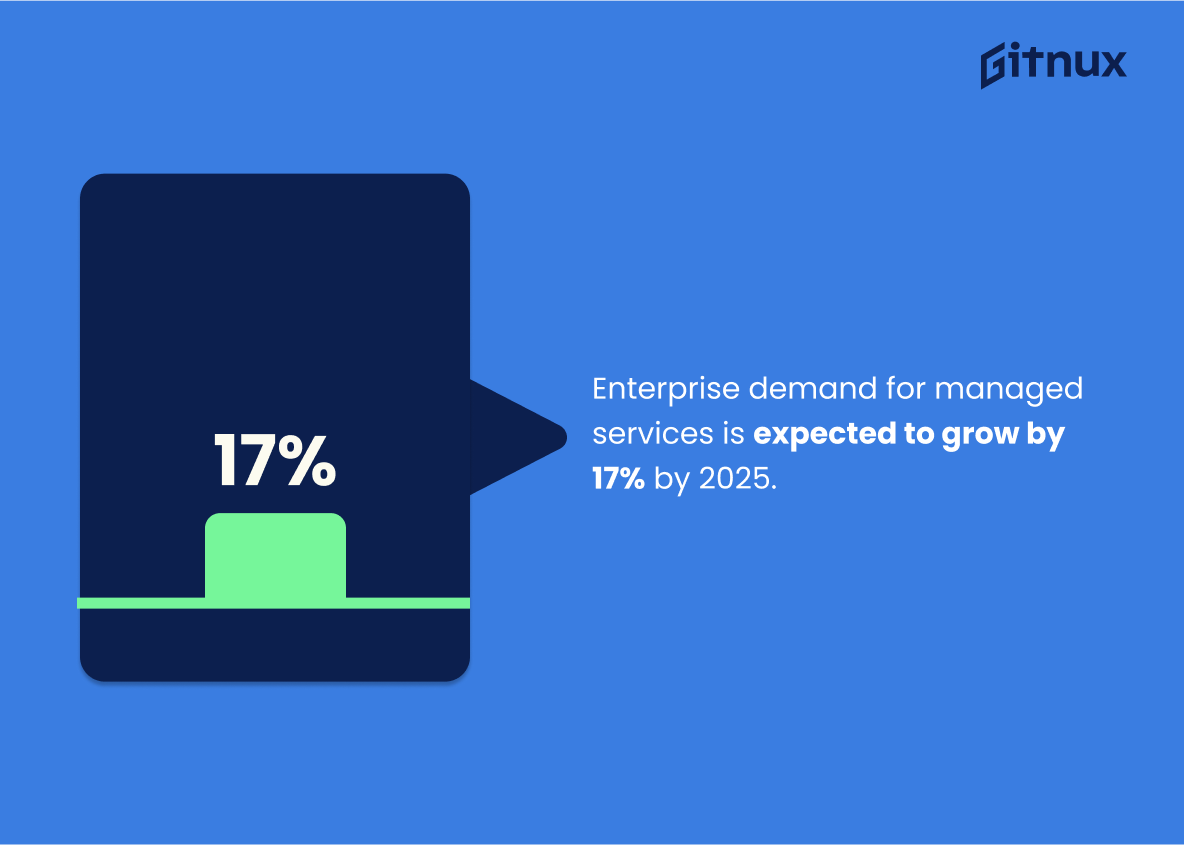In today’s technologically advanced ecosystem, managed services have become a pivotal part of businesses globally, delivering streamlined operations and enhanced productivity. Leveraging an opportunity to delve into the intricacies of this dynamic industry, this blog post aims to provide an enlightening perspective on the managed services industry through an array of compelling statistics. Whether you’re an industry professional, business leader, or simply an intrigued reader, these statistics will give you a glimpse into the multifaceted world of managed services, underlining its exponential growth, emerging trends, and the potential it holds for future enterprises. So, fasten your seatbelts as we embark on this fascinating journey, peeling back the layers of the managed services sphere through hard-hitting numbers and impactful data.
The Latest Managed Services Industry Statistics Unveiled
The global managed services market is expected to grow from USD 223.0 billion in 2020 to USD 329.1 billion by 2025, at a Compound Annual Growth Rate (CAGR) of 8.1%.
Within the blog’s discourse, laying special emphasis on the projection of a robust growth forecast for the global managed services market comes across as a pivotal asset, demonstrating its evergreen potential. The fact that it’s set to soar from USD 223.0 billion in 2020 to USD 329.1 billion by 2025, represents not just numbers, but an assertive narrative of growth, opportunity, and increasing relevance.
The compelling Compound Annual Growth Rate (CAGR) of 8.1%, in particular, dots the i’s and crosses the t’s in underscoring the dynamism of this industry. This figure is a bellwether, indicating the strong momentum the managed services market is gaining each year. Not merely content to rest on its laureals, this industry shows a consistent trajectory of expansion, thereby making it a proverbial goldmine for stakeholders, entrepreneurs, and investors alike. Such statistically robust growth forecasts paint a picture of a future where managed services continue to occupy a significant, expanding share in the business landscape.
Managed services contribute to around 25% to 30% of the IT spending made by small businesses.
Painting a vivid picture with numbers, the data indicating that managed services contribute to around 25% to 30% of the IT spending by small businesses underscores the ingrained significance of these services in the canvas of small-scale enterprises. Not only does it reflect the faith already bestowed upon these services by small businesses, but it also underscores a vast growth potential this sector holds. Poised on this spectrum of substantial contribution, the managed service providers can tap into this marked dependence, customizing their services to cater to the unique needs of these businesses that contribute a lion’s share towards the economy. Thus, the importance of this statistic cannot be deemed as trivial in a discussion revolving around managed services industry, rather, it acts as a critical catalyst shaping both present understandings and future directions.
Managed services are offered by 64% of managed service providers (MSPs) worldwide.
Spotlighting the statistic that a good majority – 64% to be precise – of MSPs globally offer managed services forms the heart of the commentary on Managed Services Industry Statistics. This figure doesn’t merely serve as a numerical fact but paints a picture of prevalent industrial practices, market penetration, and industry standard. Despite being diverse, a sizeable chunk of MSPs are converging on a common sector, showcasing the prominence and growing demand of managed services in technological fields worldwide. It reinforces the inference of a dynamic market trend, one with enticing opportunity for both established MSP businesses and emerging ventures to capitalize on. Ultimately, this single statistic amplifies the common voice within the industry, a voice that speaks to the growing reliability on and significance of, managed services.
The managed IT services segment is expected to hold the largest market size during the forecast period, 2020–2025.
Shining a spotlight on the Managed IT services segment and its projected market dominance from 2020 to 2025, uncovers a treasure trove of insights about the Managed Services Industry. This figure is not just informative but pivotal—think of it as the North Star guiding businesses and investors through the Managed Services landscape.
The forecast emblazons the potential for exponential growth and profitability within the Managed IT services sphere. Herein lies a call to action for emerging and established companies to focus or refocus their efforts on this booming arena. This projection also piques the interest of savvy investors, who may look at this statistic as a golden ticket to high-ROI opportunities.
Moreover, this transformative trend can influence the strategic decisions of allied businesses, prompting a ripple effect throughout the entire IT ecosystem.
Therefore, beyond a mere numerical projection, this statistic sets the tone for strategic planning, investment decisions, and overall business development in the Managed Services Industry during the forecast period.
SMEs are expected to hold a larger size of the managed services market from 2020 to 2025.
Weaving this statistic into the narrative of a blog post paints a futuristic canvas of the Managed Services Industry. It highlights the metamorphosis of small and medium-sized enterprises (SMEs) from being mere players to becoming market behemoths within the space of five years. It hints at the impending potential growth of managed services among SMEs, a trend that readers – many of whom might be decision makers in such enterprises – would find illuminating. This statistic is a semaphore signaling that the managed services landscape is evolving, with SMEs gaining more prominence, and definitely a scenario to watch between 2020 and 2025. Ambitious SMEs can absorb insights from this trend and tailor their strategies accordingly to tap into this forecasted market expansion.
63% of MSPs say security services are the number one managed service planned for launch in the next 12 months.
Delving into the strategic fabric of the Managed Services industry, the statistic that ‘63% of MSPs predict security services as the top managed service slated for expansion in the forthcoming 12 months,’ casts a potent spotlight on the industry’s direction. This prediction underscores the notable shift in focus towards a more security-centric approach, pivoting away from traditional, purely maintenance-based services.
Security, increasingly becoming paramount with rising cybercrime, data breaches, and growing awareness of digital threats, has woven itself into the DNA of business strategy. Enterprises are now demanding advanced security strategies from their providers, and this statistic substantiates the industry’s response to that demand.
Linking it back to our deep-dive into Managed Services Industry statistics, this intriguing figure demonstrates the near-palpable pulse on the industry’s holistic transformation. It not only puts forward trends to monitor but also draws a roadmap for new entrant MSPs to strategize their services, carving out significant scope in this booming industry sector.
Managed services market revenue worldwide is expected to reach $274.20 billion in 2021.
An astute observer of the Managed Services Industry would be keen to spotlight the forecasted surge of global revenue up to $274.20 billion in 2021. This monumental growth trajectory is clearly an indicative marker of the industry’s vitality and buoyancy. It emphasizes the escalating demand for these services across the globe while also projecting an optimistic landscape for the sector’s stakeholders, whether they are thriving giants or budding entrants. All of these unfolding trends illuminate the industry’s relevance in today’s digital and globalized world, portraying a vivid panorama that any serious analyst of Managed Services Industry statistics cannot afford to overlook.
As of 2019, 54% of companies provide IT support in-house, while 31% use both in-house and outsourced resources.
Peeling back the layers of this enlightening statistic, it provides a comprehensive snapshot of the current market scenario. It tells us that a significant 54% of companies lean towards self-reliance when it comes to IT support, trusting their own in-house teams. On the flip side, a notable 31% of these organizations embrace a hybrid model, leveraging both their own resources and those from outside their walls.
This insight provides a treasure-trove of information. In the larger context of Managed Services Industry, it underlines the industry’s potential for growth. With nearly a third of the companies using both in-house and outsourced resources, they’ve already acknowledged the benefits of managed services. This offers a ready market for service providers to tap into, with benefits such as cost-savings, access to specialized skills, or better focus on core business being potential selling points.
As for the bigger group that still provides IT support in-house, this might point to unexplored territory, a potential goldmine. Managed service providers may need to dig deeper to find out the factors anchoring these companies, whether it’s cost apprehensions, quality concerns, or a simple lack of awareness, and tailor their strategies accordingly.
Clearly this statistic offers invaluable insights for businesses exploring new opportunities, marketing strategies, and even pricing models, providing the compass and map for navigating the complex landscape of the Managed Services Industry. Indisputably, awareness and understanding of this statistic serves as a powerful tool in the hands of decision makers in the Managed Services Industry.
IT managed services adoption increased by 45% in 2020, compared to a 38% increase for a traditional break/fix model.
Highlighting an impressive surge, the 45% upswing in IT managed services adoption in 2020 truly underscores the transformative shift within the managed services industry landscape. This sharp rise, substantially greater than the 38% increase seen within the traditional break/fix model, underlines the growing preference for managed services. Not just pointing to a trend, these numbers scream change – a fundamental pivot marrying technology evolution and business necessity.
In the context of an industry statistics report, this acceleration reveals an evolving narrative of not just survival but striding forward within an increasingly digital economy. Amidst the mask of numbers and percentages, it shines a spotlight on the critical role played by managed IT services in enabling businesses to manage their IT operations more efficiently, ultimately driving competitive advantage. One cannot dismiss these statistics as mere numbers, rather they paint a vivid picture of an industry fast outpacing its older, more traditional models.
North America is expected to hold the largest market size in the managed services market during the forecast period from 2020-2025.
Highlighting this prediction illustrates North America’s commanding presence in the managed services market in the coming half-decade. It gives a clear signal to stakeholders, including businesses, investors and market analysts, about where to focus their efforts and investments. The tremendous growth potential offers untapped opportunities for existing players and newcomers alike. For the readers of a post about Managed Services Industry Statistics, it paints a vivid picture of the geographical distribution of demand, underscoring the importance of understanding regional trends in strategy planning. Also, it serves as a magnet for local talent, attracting professionals looking for flourishing careers in the managed services industry with the assurance of the region’s robust growth.
Over 56% of organizations look towards managed services to gain access to newer technologies.
Highlighting the figure ‘over 56% of organizations seek managed services for access to newer technologies,’ underscores the significance of Managed Service Providers (MSPs) serving as gateways to technological advancement. In the rapidly changing digital landscape, organizations aim to stay ahead of their competitors, and MSPs appear to be their major ally in this endeavor. The prevalence of such a trend, suggested by the percentage, underpins the importance of MSPs in today’s businesses. In the context of the Managed Services Industry, this statistic emphasizes the reliance upon these services and the indispensable role they play in aiding companies to adopt cutting-edge technologies. So, on a blog post about this industry’s statistics, it’s a resonating data point illustrating how MSPs are not just an element of the operations but evolve as strategic partners driving technological transformation.
More than 90% of MSPs now include cybersecurity as part of their portfolio of services.
Delving into the Managed Services Industry Statistics, an intriguing revelation surfaces – cybersecurity is not an option, but a necessity, and over 90% of MSPs echo this sentiment by incorporating it into their plethora of services. This trend underpins a crucial paradigm shift in the industry; acknowledging cyber threats as paradigmatic menaces rather than mere probabilities. All in all, this not only accentuates the gravity of security issues but also puts a spotlight on the strategic diversification among MSPs, thereby redefining industry standards while setting the bar exceedingly high for newcomers.
Cloud-based managed services are estimated to grow at a CAGR of nearly 20% through 2022.
The predicted near 20% CAGR of cloud-based managed services through 2022 provides a beacon, a luminary if you will, towards a promising future for the industry. This statistic shines a spotlight on the assured growth trajectory of cloud services, demonstrating the rapid pace at which businesses are adopting these solutions. It catalyzes a realization of the magnitude of opportunity in the managed services sphere, injecting both optimism and excitement in the heart of the industry.
This growing trend not only becomes a testament to the technological progression but also illustrates the pivotal role of cloud-based services in reshaping modern business strategies. In the grand narrative of the managed services industry statistics, it embodies not just a number, but a tangible transition towards a more responsive, scalable, and productive business environment. The statistic is writing the next chapter, laying the foundation brick for the industry’s testament to digital transformation.
Enterprise demand for managed services is expected to grow by 17% by 2025.
Forecasting a substantial 17% growth rate in enterprise demand for managed services by 2025 casts a promising light on the Managed Services Industry. The statistic illustrates not just its enduring relevance but also the potential for significant growth within this evolving business sector. This prediction suggests stimulating opportunities both for businesses in the industry and those explorative to enter. Existing providers could seize this potential to expand their offerings, whereas new participants can leverage emerging areas or niche demands. For consumers, this growth foreshadows improving quality and competitiveness of services offered. The blog post effectively captures this palpable momentum and accentuates the significance of the industry by presenting this compelling forecast.
Global outsourcing market amounted to 92.5 billion U.S. dollars in 2019, IT outsourcing constituted around 66%.
Delving into the realms of the Managed Services Industry, the enormity of the global outsourcing market, which soared to a staggering 92.5 billion U.S. dollars in 2019, provides a vivid indication of the industry’s potential. The intriguing part comes when we unearth that IT outsourcing grabbed a sizeable 66% share of this tremendous market. This nugget of information lays bare the deep-seated relevance and massive penetration of IT services in the global market, acting as a compass guiding businesses around the world towards a more managed, efficient, and technologically-driven future. It indeed paints an optimistic picture for the Managed Services Industry, signaling high demand, dramatic growth, and ocean-like opportunities for businesses venturing into this domain.
Conclusion
In sum, the managed services industry continues to demonstrate immense growth and potential, underpinned by robust statistical data. The increasing reliance on advanced technology by businesses of all sizes, combined with the need for cost-effective, efficient, and secure IT solutions, is contributing to this upward trend. Assessing and understanding these industry statistics is vital for organizations wishing to stay competitive and grow in today’s digital landscape, as well as for IT service providers looking to cater to their evolving needs. Thus, the managed services industry promises a dynamic, progressive future, shaped by constant innovation and expertise.
References
0. – https://www.financesonline.com
1. – https://www.www.globenewswire.com
2. – https://www.www.comptia.org
3. – https://www.www.getkisi.com
4. – https://www.www.statista.com
5. – https://www.www.businesswire.com
6. – https://www.www.datto.com
7. – https://www.www.connectwise.com
8. – https://www.www.marketsandmarkets.com
9. – https://www.www.pulseway.com
